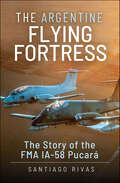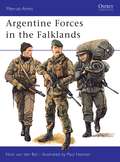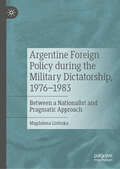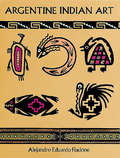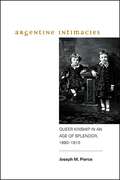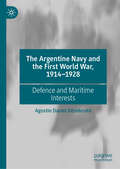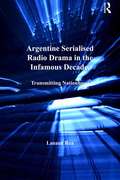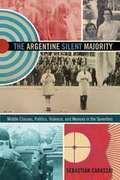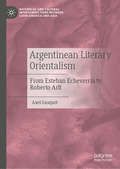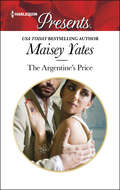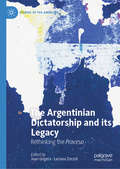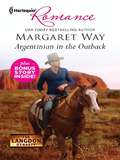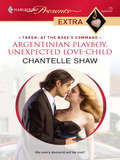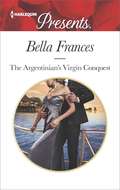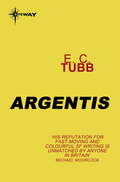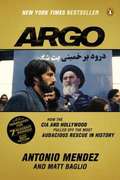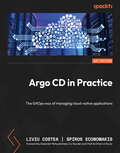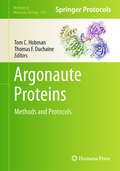- Table View
- List View
The Argentine Flying Fortress: The Story of the FMA IA-58 Pucará
by Santiago RivasIn the 1960’s guerrillas were operating in almost all Latin American countries, as well as in Africa and Asia, and the need of specialized weapons to fight them arose. The Argentine Air Force, seeing this threat grow, asked the FMA factory to produce a counterinsurgency airplane to equip the force, but also to offer on the international market. After several proposals were analyzed, a final product emerged, called the IA-58 Pucará, a robust twin turboprop aircraft with heavy internal weapons, planned to operate from unprepared airstrips on very hard conditions. The plane entered service with the Argentine Air Force in 1975 and more than 100 were produced over the years, with several versions being developed or proposed. It was purchased by Uruguay, Colombia and Sri Lanka, the type gained world notoriety when they took part on the 1982 South Atlantic war, but also had combat experience in Colombia and Sri Lanka, and was tested by the Royal Air Force. Now, with the original version already retired, the Argentine Air Force plans to convert them into the Pucará Fénix version, with new engines and avionics, with new missions too, like intelligence, surveillance and reconnaissance. While some aspects of its story were described in many publications, most of it has never been told until now, including many unknown proposed versions and details of its operational record, both in Argentina and in the other countries that operated the plane.
Argentine Forces in the Falklands
by Paul Hannon Nick BijlThe announcement of the imminent withdrawal of the British Royal Navy's ice patrol ship HMS Endurance in early 1982 prompted the Argentinian Junta in Buenos Aires to plan a military grab of the Falklands -- a siege they assumed would succeed with little resistance. Such an adventure was attractive as a distraction for the Argentine public at a time of political unease. In April, the Junta, led by Gen. Leopoldo Galtieri, made its move. This fascinating book examines the history, organization and equipment of the Argentine forces that battled for control of this remote British outpost during the Falklands War (1982).
Argentine Foreign Policy during the Military Dictatorship, 1976–1983: Between a Nationalist and Pragmatic Approach
by Magdalena LisińskaThis book examines Argentine foreign policy under the military dictatorship from 1976–1983, also known as the National Reorganization Process. It brings together case studies on the most distinctive decisions and key issues in the regime’s foreign relations, including the international response to human rights violations, the dispute with Chile over the Beagle Channel, covert operations in Central America, the Argentine nuclear program, and the Falklands War. Lisińska examines the influence of ideological factors on foreign policy decisions, highlighting the relationship between the nationalism shaping the military’s policy goals and its pragmatic approach to achieving them.
Argentine Indian Art (Dover Pictorial Archive)
by Alejandro Eduardo FiadoneThis stunning collection of 284 rare designs is a bonanza for artists and craftspeople seeking distinctive patterns with a South American Indian flavor. The carefully adapted, authentic motifs include animal and totemic designs, geometric and rectilinear figures, abstracts, grids, and many other styles in a wide range of shapes and sizes.
Argentine Intimacies: Queer Kinship in an Age of Splendor, 1890−1910 (SUNY series, Genders in the Global South)
by Joseph M. PierceWinner of the 2020 Best Book in the Nineteenth Century Award presented by the Nineteenth Century Section of the Latin American Studies AssociationAs Argentina rose to political and economic prominence at the turn of the twentieth century, debates about the family, as an ideological structure and set of lived relationships, took center stage in efforts to shape the modern nation. In Argentine Intimacies, Joseph M. Pierce draws on queer studies, Latin American studies, and literary and cultural studies to consider the significance of one family in particular during this period of intense social change: Carlos, Julia, Delfina, and Alejandro Bunge. One of Argentina's foremost intellectual and elite families, the Bunges have had a profound impact on Argentina's national culture and on Latin American understandings of education, race, gender, and sexual norms. They also left behind a vast archive of fiction, essays, scientific treatises, economic programs, and pedagogical texts, as well as diaries, memoirs, and photography. Argentine Intimacies explores the breadth of their writing to reflect on the intersections of intimacy, desire, and nationalism, and to expand our conception of queer kinship. Approaching kinship as an interface of relational dispositions, Pierce reveals the queerness at the heart of the modern family. Queerness emerges not as an alternative to traditional values so much as a defining feature of the state project of modernization.
The Argentine Navy and the First World War, 1914-1928: Defence and Maritime Interests
by Agustín Daniel DesideratoCombining the social and cultural history of war, global and maritime history, this book examines the Argentine Navy during the First World War and in its immediate aftermath. Drawing from a wide range of primary sources, including naval publications, correspondence, memoirs and official documents, the book contributes to the institutional history of the Argentine Navy by outlining the contours of the Force at the beginning of the twentieth century - detailing its organisation, resources and training - and its evolution over the decades. The author also explores the repercussions of the Great War on the Argentine Navy, focusing on the circulation of ideas, knowledge and debates, and their appropriation and re-signification by this armed institution. It reconstructs the scenario of the Allied naval blockade and German submarine warfare - the main pillars of the economic war waged by the belligerents - and emphasises the difficulties and challenges they posed for Argentine trade, navigation and neutrality, as well as for the naval modernisation projects that the country undertook. Reflecting on the impact of the First World War on the Navy of the Argentine Republic between 1914 and 1928, this book will be valuable reading for those researching maritime history, Argentine history and the socio-cultural history of warfare.
Argentine Paradox: Economic Growth and the Populist Tradition
by Rafael Di Tella Ingrid VogelDescribes the political and economic development in Argentina from 1900 to 1989, with a focus on the role of Peron and populism. A rewritten version of an earlier case.
Argentine Serialised Radio Drama in the Infamous Decade, 1930–1943: Transmitting Nationhood (New Hispanisms: Cultural and Literary Studies)
by Lauren ReaIn her study of key radio dramas broadcast from 1930 to 1943, Lauren Rea analyses the work of leading exponents of the genre against the wider backdrop of nation-building, intellectual movements and popular culture in Argentina. During the period that has come to be known as the infamous decade, radio serials drew on the Argentine literary canon, with writers such as Héctor Pedro Blomberg and José Andrés González Pulido contributing to the nation-building project as they reinterpreted nineteenth-century Argentina and repackaged it for a 1930s mass audience. Thus, a historical romance set in the tumultuous dictatorship of Juan Manuel de Rosas reveals the conflict between the message transmitted to a mass audience through popular radio drama and the work of historical revisionist intellectuals writing in the 1930s. Transmitted at the same time, González Pulido’s gauchesque series evokes powerful notions of Argentine national identity as it explores the relationship of the gaucho with Argentina’s immigrant population and advocates for the ideal contribution of women and the immigrant population to Argentine nationhood. Rea grounds her study in archival work undertaken at the library of Argentores in Buenos Aires, which holds the only surviving collection of scripts of radio serials from the period. Rea’s book recovers the contribution that these products of popular culture made to the nation-building project as they helped to shape and promote the understanding of Argentine history and cultural identity that is widely held today.
The Argentine Silent Majority: Middle Classes, Politics, Violence, and Memory in the Seventies
by Sebastián CarassaiIn The Argentine Silent Majority, Sebastián Carassai focuses on middle-class culture and politics in Argentina from the end of the 1960s. By considering the memories and ideologies of middle-class Argentines who did not get involved in political struggles, he expands thinking about the era to the larger society that activists and direct victims of state terror were part of and claimed to represent. Carassai conducted interviews with 200 people, mostly middle-class non-activists, but also journalists, politicians, scholars, and artists who were politically active during the 1970s. To account for local differences, he interviewed people from three sites: Buenos Aires; Tucumán, a provincial capital rocked by political turbulence; and Correa, a small town which did not experience great upheaval. He showed the middle-class non-activists a documentary featuring images and audio of popular culture and events from the 1970s. In the end Carassai concludes that, during the years of la violencia, members of the middle-class silent majority at times found themselves in agreement with radical sectors as they too opposed military authoritarianism but they never embraced a revolutionary program such as that put forward by the guerrilla groups or the most militant sectors of the labor movement.
The Argentine Triangle: A Craig Page Thriller
by Allan TopolFormer CIA director Craig Page is enjoying a new, exhilarating life racing cars across Europe. But when new dangers threaten America and an old friend goes missing in Argentina, will Craig be ready to step up to the plate? Undercover in the glamorous world of Buenos Aires' wealthy elite, Page finds himself on the brink of a terrible discovery. A world of brutality hidden in the classified secrets of Argentina's Dirty War comes to light, painting an image of the cataclysmic future awaiting South America. Hard on the heels of The Russian Endgame comes Allan Topol's next great thriller. Rife with the exotic backdrops and hairpin plot turns that put Topol on the best-seller list, The Argentine Triangle is a heart-stopping foray into human vice coupled with power accelerating towards catastrophe. In a world fraught with global conspiracy, Craig Page is king.
The Argentine Triangle (A Craig Page Thriller)
by Allan TopolFormer CIA director Craig Page is enjoying a new, exhilarating life racing cars across Europe. But when new dangers threaten America and an old friend goes missing in Argentina, will Craig be ready to step up to the plate?
Argentinean Literary Orientalism: From Esteban Echeverría to Roberto Arlt (Historical and Cultural Interconnections between Latin America and Asia)
by Axel GasquetThis book examines the modes of representation of the East in Argentinean literature since the country’s independence, in works by canonical authors such as Esteban Echeverría, Juan B. Alberdi, Domingo F. Sarmiento, Lucio V. Mansilla, Pastor S. Obligado, Eduardo F. Wilde, Leopoldo Lugones, and Roberto Arlt. The East, which has always fascinated intellectuals and artists from the Americas, inspired the creation of imaginary elements for both aesthetic and political purposes, from the depiction of purportedly despotic rulers to a genuine admiration for Eastern history and millennial cultures. These writers appropriated the East either through their travels or by reading chronicles, integrating along the way images that would end up being universalized by the Argentinean dichotomy between civilization and barbarism, all the while assigning the negative stereotypes of the exotic East to the Pampa region. With time, the exoticism of the Eastern world would shed its geopolitical meaning and was ultimately integrated into the national literature, thus adding new elements into the Argentinean imaginary.
The Argentine's Price
by Maisey YatesLazaro Marino will stop at nothing to reach the top. He's climbed his way out of poverty, but there's still one thing that has been denied to him-entry into the highest echelons of society. And blue-blooded heiress Vanessa Pickett is the key to unlocking the door to all that he desires...With her business in crisis, Vanessa is desperate. A marriage proposal of the utmost convenience will give both Lazaro and Vanessa everything they need. But, for Vanessa, this deal with the devil comes with a startling price.
The Argentinian Dictatorship and its Legacy: Rethinking the Proceso (Studies of the Americas)
by Juan Grigera Luciana ZorzoliThis edited volume provides a comprehensive overview of the renewal of academic engagement in the Argentinian dictatorship in the context of the post-2001 crisis. Significant social and judicial changes and the opening of archives have led to major revisions of the research dedicated to this period. As such, the contributors offer a unique presentation to an English-speaking audience, mapping and critiquing these developments and widening the recent debates in Argentina about the legacy of the dictatorship in this long-term perspective.
Argentinian in the Outback & Cattle Rancher, Secret Son
by Margaret WayBeautiful Ava Selwyn is starting to take her life back into her own hands when Juan-Varo de Montalvo arrives at Kooraki cattle station. The dark-eyed Argentinian unsettles the usually composed Ava.Varo can see the wariness in Ava's eyes, and something in him cries out to protect her, but life on the other side of the world will soon call him back.Varo has the power to make Ava whole once more-if only she'll let him in...
Argentinian Playboy, Unexpected Love-Child
by Chantelle ShawBillionaire polo player Diego Ortega has seen the world and sampled many of its women. Sweet beauty Rachel Summers has sated his appetite--so why does he find his body yearning for more? Rachel knows she is not Diego's type-- less glamorous supermodel, more wholesome country girl. But that doesn't mean she has to wear her heart on her sleeve. She kept her virginity a secret before he bedded her. . . . But now she has to tell Diego she's carrying his baby!
The Argentinian's Baby of Scandal (One Night With Consequences #56)
by Sharon Kendrick“I’m…pregnant.”The consequence of his seduction!Housekeeper Tara Fitzpatrick is always as efficient and professional as possible. Until her billionaire boss, Lucas Conway, looks at her with a fiery intensity she just can’t resist. Only now Tara has the mortifying task of flying to New York to tell him—a renowned bachelor whose least favourite word is family—that their electrifying night in his bed had the most scandalous of consequences!Follow Cinderella to glamorous New York!
The Argentinian's Demand
by Cathy WilliamsWhat the bad boy of the business world wants... When billionaire Leandro Perez's indispensable and alluring assistant Emily Edison resigns and lets him know what she really thinks of him, he's furious. He won't let her off easily. If she wants to go, she'll pay the price-two weeks in paradise at his beck and call! ...he gets! Trapped by Leandro, Emily's fragile plan to marry a suitable man to bring security to her family is threatened. And as their attraction gives way to a craving that's impossible to deny Emily will have to make the ultimate choice-duty...or desire?
The Argentinian's Solace
by Susan StephensDiego Acosta's polo-playing days are over. Living in self-imposed exile on his idyllic island, he finds his nights are now filled with tormenting memories rather than the beautiful women who once graced his king-size bed.When Maxie Parrish crashes into his solitude, radiating exuberance and a love of life, she burns so brightly he can't take his eyes off her! He'll seduce her and conquer her with the same single-minded determination that saw him rise to the top of the world polo circuit.This time he wants to walk away unharmed, because the scars that can't be seen take longer to heal....
The Argentinian's Virgin Conquest
by Bella FrancesHis most tempting conquest! Lucinda Bond might be descended from English nobility, but her aloofness hides painful insecurities. Painful enough that she's never allowed herself to be touched. Then Dante Hermida sweeps her from the Caribbean Sea, assuming she's drowning, and Lucie finds herself in the arms of Argentina's most outrageous playboy! His arrogance challenges her, but his caressing gaze ignites a desperate desire... Despite Lucie's defiant facade, soon Dante has her at his sensual command! But discovering Lucie's innocence, this dark-hearted Argentinian finds himself longing to claim her...with a need that shows no sign of abating!
Argentis
by E. C. TubbThis colorful, action-packed space opera tells of rival factions, including Earthmen and an enigmatic and fanatical Venusian, who voyage through space in a race to find the derelict ship of an ancient civilization, a Venusian Elder Race.
Argentis
by E.C. TubbThis colorful, action-packed space opera tells of rival factions, including Earthmen and an enigmatic and fanatical Venusian, who voyage through space in a race to find the derelict ship of an ancient civilization, a Venusian Elder Race.
Argo: How the CIA and Hollywood Pulled Off the Most Audacious Rescue in History
by Matt Baglio Antonio MendezThe true, declassified account of CIA operative Tony Mendez's daring rescue of American hostages from Iran that inspired the critically-acclaimed film directed by and starring Ben Affleck, and co-starring John Goodman, Alan Arkin, and Bryan Cranston.<P><P> On November 4, 1979, Iranian militants stormed the American embassy in Tehran and captured dozens of American hostages, sparking a 444-day ordeal and a quake in global politics still reverberating today. But there is a little-known drama connected to the crisis: six Americans escaped. And a top-level CIA officer named Antonio Mendez devised an ingenious yet incredibly risky plan to rescue them before they were detected.Disguising himself as a Hollywood producer, and supported by a cast of expert forgers, deep cover CIA operatives, foreign agents, and Hollywood special effects artists, Mendez traveled to Tehran under the guise of scouting locations for a fake science fiction film called Argo. While pretending to find the perfect film backdrops, Mendez and a colleague succeeded in contacting the escapees, and smuggling them out of Iran.<P> Antonio Mendez finally details the extraordinarily complex and dangerous operation he led more than three decades ago. A riveting story of secret identities and international intrigue, Argo is the gripping account of the history-making collusion between Hollywood and high-stakes espionage.
Argo CD in Practice: The GitOps way of managing cloud-native applications
by Liviu Costea Spiros Economakis Alexander MatyushentsevBuild CD pipelines following GitOps principles like declarative and immutable changes stored in version control, all continuously reconciled by Argo CD, and minimize the failure of deployments.Purchase of the print or Kindle book includes a free eBook in the PDF format.Key FeaturesDiscover how to apply GitOps principles to build real-world CD pipelinesUnderstand Argo CD components and how they work together to reconcile cloud native applicationsLearn to run Argo CD in production with declarative config changes, security, observability, disaster recovery, and moreBook DescriptionGitOps follows the practices of infrastructure as code (IaC), allowing developers to use their day-to-day tools and practices such as source control and pull requests to manage apps. With this book, you'll understand how to apply GitOps bootstrap clusters in a repeatable manner, build CD pipelines for cloud-native apps running on Kubernetes, and minimize the failure of deployments. You'll start by installing Argo CD in a cluster, setting up user access using single sign-on, performing declarative configuration changes, and enabling observability and disaster recovery. Once you have a production-ready setup of Argo CD, you'll explore how CD pipelines can be built using the pull method, how that increases security, and how the reconciliation process occurs when multi-cluster scenarios are involved. Next, you'll go through the common troubleshooting scenarios, from installation to day-to-day operations, and learn how performance can be improved. Later, you'll explore the tools that can be used to parse the YAML you write for deploying apps. You can then check if it is valid for new versions of Kubernetes, verify if it has any security or compliance misconfigurations, and that it follows the best practices for cloud-native apps running on Kubernetes. By the end of this book, you'll be able to build a real-world CD pipeline using Argo CD.What you will learnUnderstand GitOps principles and how they relate to IaCDiscover how Argo CD lays the foundation for reconciling Git state with the cluster stateRun Argo CD in production with an emphasis on reliability and troubleshootingBootstrap Kubernetes clusters with essential utilities following the GitOps approachSet up a CD pipeline and minimize the failure of deploymentsExplore ways to verify and validate the YAML you put together when working with KubernetesUnderstand the democratization of GitOps and how the GitOps engine will enable its further adoptionWho this book is forIf you're a software developer, DevOps engineer, or SRE who is responsible for building CD pipelines for projects running on Kubernetes and wants to advance in your career, this book is for you. Basic knowledge of Kubernetes, Helm, or Kustomize and CD pipelines will help you to get the most out of this book.
Argonaute Proteins: Methods and Protocols (Methods in Molecular Biology #725)
by Tom C. Hobman Thomas F. DuchaineWith the rapid proliferation of RNAi applications in basic and clinical sciences, the challenge has now become understanding how components of RNAi machinery function together in a regulated manner. Argonaute proteins are the central effectors of RNAi and are highly conserved among eukaryotes and some archaebacteria. These RNA-binding proteins use small guide RNAs to silence expression of genes at the mRNA and DNA levels. In Argonaute Proteins: Methods and Protocols, expert researchers in this burgeoning field provide detailed, up-to-date methods to study Argonaute protein functions and interactions in a wide variety of cell types ranging from yeast to mammalian systems, as well as in vitro. Written in the highly successful Methods in Molecular BiologyTM series format, chapters include brief introductions to their respective topics, lists of the necessary materials and reagents, step-by-step, readily reproducible laboratory protocols, and key tips on troubleshooting and avoiding known pitfalls. Practical and authoritative, Argonaute Proteins: Methods and Protocols serves as a vital reference for both experienced and novice scientists approaching the vast complexities of RNAi research.
